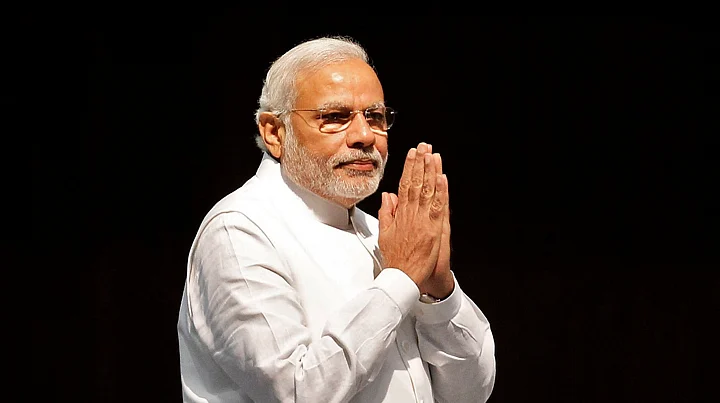It is 67 years, 11 months and 25 days since India attained Independence. On Saturday, Prime Minister Narendra Modi will unfurl the national Tricolour from the ramparts of the Red Fort. It will be his second I-Day address to the nation.
Modi has converted the otherwise routine I-Day into a ‘calendar event’ with policy pronouncements that find place in the budget that follows. Last year’s highlights included Swachh Bharat, Jan Dhan Yojana (JDY), Make in India, Digital India, Skill India, the toilets for schools scheme and Adarsh Gram… ideas promising long-term change.
Taking Stock
How have they done? JDY is an enrolment success that awaits operational expansion. NITI Aayog has replaced the Planning Commission but is yet being defined. The rest could at best be described as “work in progress”. And progress of each idea is haunted by a confluence of addled perceptions, design errors and inadequate capacity.This year, Modi—who knows the multiplier effect of social media in aggregating public opinion—has called for suggestions on what he should speak on. The suggestions that poured in on myGov.in are essentially appeals to instal change for a more efficient government. And the citizens’ quest is not a romantic notion but a response to the parade of inefficiency in public services and wastage/theft witnessed and paid for by taxpayers.
On Wednesday, the Lok Sabha voted to allow government to spend an additional Rs 40,821 crore. Of this, Rs 11,116.76 crore—four times the amount allocated for crop insurance—will be used to write off losses of Prasar Bharati. Rs 12,721 crore will be used to recapitalise banks. The fact that profits of private banks are higher than all PSU banks and that the market cap of top five private banks is more than that of all PSU banks is evidence of the magnitude of malaise.
Add Rs 800 crore for loss-making Air India. Over half of Rs 40,821 crore is for bailouts. Wednesday also saw the government clear the restructuring of BSNL—which has not reported profits since 2009—and of loss-making MTNL. On Thursday, the PM reviewed the power sector. Over Rs 75,000 crore of bank depositors’ money lent to companies is in jeopardy as nearly 45,000 MW of power is at risk as SEBs are losing Rs 232 crore a day in leakage and theft. A bailout for SEBs is inevitable.
The unstated question that taxpayers and citizens are agitated about is what about corrective measures, a stop loss on losses? In a nutshell, the Government of India borrows around $250 million a day or Rs 1,600 crore/day to fund the gap between income and expenditure. It also loses nearly $70 million a day to wastage, leakage and theft.
The Singaporean Model
On Sunday, Singapore celebrates 50 years of a stupendous transformation. The material triumph of the island nation frequently obscures the fact that its success is founded on state capitalism—albeit with a difference, a merciless quest for efficiency and excellence. India has waffled for decades. Singapore has a viable model where enterprises are listed and majority owned by government-linked entities or sovereign funds and management is professional. As early as in 1974, the Singapore government created a vehicle—Temasek Holdings—to own and manage government assets.
A host of enterprises across sectors, including blue chips Singapore Airlines and SingTel, are owned by Temasek Holdings.It is apparent that Modi and, therefore, Modi Sarkar are not believers in the idea of privatisation—driven by an aversion to creating new business oligarchs. The strategy of public ownership, however, is confused with and wedded to the disastrous model of political management of enterprises. Why not transfer the ownership of PSUs to a listed fund—a sovereign fund like in Temasek of Singapore, disable political pelf and enable the corporations to be managed professionally and profitably.
Reboot and Re-sequence
The aspiration of success —for new ideas, growth and governance—demands re-sequencing the genome of government. It is a no-brainer that the for-profit ventures must be shifted out of ministerial control. Modi has argued in the past that government has no business to be in business. Separation will enable focus on delivery of public goods.
The template of accountability too need rewriting. There are plenty of laws which dictate what the bureaucracy should not do but few that spell out what it must. Babudom also needs an incentive structure —in pay and mobility—that promotes the translation of objectives into outcomes.
There is also a structural issue. NITI Aayog has apparently drafted a blueprint for state governments. It seems, the ideal template for states is about 20 departments. Juxtapose this on the government in the Centre which has over 60 departments, 64 ministers and over 100 commissions and autonomous bodies. Should the Centre have so many ministries and ministers?
NITI Aayog must extend the idea and draw a blueprint for the size of government at the Centre.Modi Sarkar came to power promising minimum government, maximum governance. India continues to be detained.
On Independence Day, Modi must reboot his campaign for minimum government to deliver maximum governance.
(The article originally appeared on The New Indian Express)
